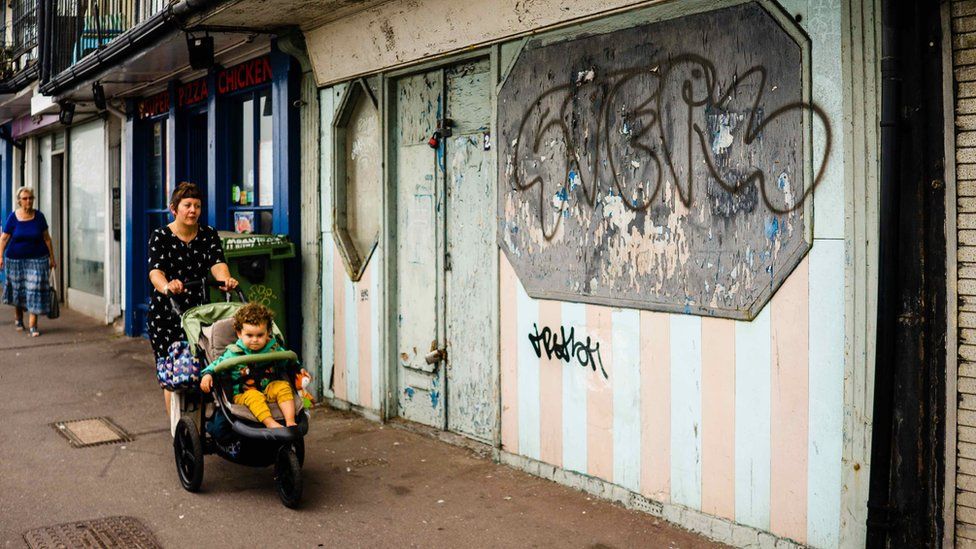Poor white teens in 'left behind' towns not going to uni
- Published

Poor white teenagers in England's former industrial towns and those living on the coast are among the least likely to go to university, warns the watchdog for fair access.
"These are the people and places that have been left behind," says Chris Millward of the Office for Students.
The watchdog has used a new measure to see which groups are likely or not to go to university.
MPs are investigating low attainment among white working class pupils.
The Office for Students looked at overlapping factors - such as poverty, race, gender and where people live - which are indicators of whether someone is likely to go to university.
'Successive generations'
This combined measure found white youngsters on free meals or from disadvantaged areas were 92% of those in the bottom fifth, in terms of the likelihood of going to to university.
These were particularly concentrated in some areas - such as parts of Nottingham, Great Yarmouth, Barnsley, Sheffield, Stoke and Hull.
Mr Millward, director of fair access, warns that these communities, "over successive generations", have missed out on the rise in access to universities.
"The expansion of educational opportunities, and the belief that equality of opportunity would flow from this, have not delivered for them. So they are less likely to see education as the way to improve their lives," writes Mr Millward.
The research emphasises the importance of place, identifying particularly low entry rates in "former industrial towns and cities across the north and midlands, or coastal towns".
But white students on free meals in London seemed to have bucked the trend, with an the entry rate that "has pulled away from that in other parts of the country" - and the capital overall has higher rates of going to university.
Who is getting places?
Figures from the Department for Education last year reported that "male white British free school meal pupils are the least likely of all the main ethnic groups to progress to higher education".
- Across all pupils eligible for free meals 26% went on to university by the age of 19, but for white pupils on free meals the figure was 16% - and only 13% for boys.
- In comparison, 59% of youngsters from black African families on free meals went to university and 32% of black Caribbean youngsters eligible for free meals.
- Among youngsters from Indian families on free meals, 57% went to university and 47% among Pakistani youngsters on free meals.
- Although they have a lower entry rate, white students are by far the biggest group, representing more than 70% of students in England.
- In 2019, across all groups, the proportion of people going to university by the age of 30 crossed 50% for the first time.
The Education Select Committee is investigating why "left behind white pupils from disadvantaged backgrounds" seem to be underachieving in education.